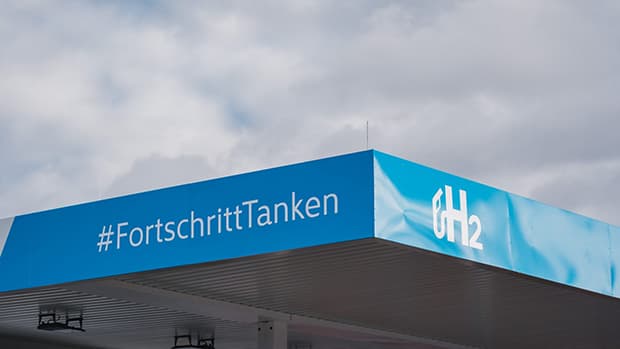Faster Batteries 2025: Hard Truths & Practical Wins
Updated 12 Oct 2025
Faster batteries dominate headlines about step-changes in range, safety and charge time. The real-world picture is more qualified: solid-state and semi-solid chemistries are promising but limited by manufacturability, cycle life and cost; fast-charging hardware outpaces local grid upgrades; energy density improves steadily but still penalises mass in many duty cycles; and materials, recycling and governance add scale risk. The most credible near-term gains come from industrialisation (process yields, dry-coating, vertical integration) and pragmatic chemistries (LFP/LMFP, high-silicon blends) — not one “hero” breakthrough.

Key Takeaways
- Faster batteries ≠ instant mass-market wins: manufacturability and cost dominate.
- Charging reality: site power and permitting, not peak kW claims, set availability.
- Materials & recycling: upstream tightness and lagging capacity are non-trivial risks.
- Near-term wins: LFP/LMFP, high-Si anodes, pack/thermal engineering, process yields.
- Strategy: diversify chemistries, go upstream early, engineer for the grid you have, guarantee battery health.
Why “faster batteries” claims need context
Automotive roadmaps often compress lab results into near-term fleet impact. But electrochemistry advances must pass through manufacturing, infrastructure and behaviour before drivers feel the benefit. This article synthesises recent reporting, peer-reviewed work and industry roadmaps, then translates them into operator-level implications.
Related: EV & Hydrogen Slowdowns 2025 · Hydrogen Internal Combustion Engine (H2ICE): 2025 Guide
Technical performance vs industrial reality
Solid-state and semi-solid batteries
Solid-state cells promise higher energy density and safety, but most programmes remain at pilot or limited demos. Bottlenecks: cycle life, interfacial resistance, manufacturing yield and cost of goods. Semi-solid launches marketed for extended range have struggled to match public claims in daily use; 1,000-km headlines are more rhetorical than practical for mainstream users. 1 2 3
Implication: treat solid/semi-solid as options with stage-gates tied to manufacturability and total pack cost — not just cell metrics.
Fast charging and infrastructure
10–15 minute charges are feasible in prototypes and select corridors, but power delivery at scale is bounded by site connection capacity, distribution upgrades, long transformer lead times and permitting. The network median is far below the marketing maximum; real-world speeds vary with temperature, SoC windows and station load. 4
Implication: engineering for efficiency and realistic C-rates often beats chasing headline speeds the grid cannot sustain.
Energy density, mass and duty cycles
Energy density is improving, yet mass/packaging penalties still hit payload and utilisation in commercial, rural and long-haul contexts. Binding constraints remain turn-time, route predictability and charger availability rather than lab energy density alone. 4 5
Implication: mixed powertrains (HEV/PHEV) retain value where infrastructure is weak or duty profiles penalise mass and charge downtime.
Pros
- Real gains from LFP/LMFP, high-Si anodes, pack/thermal engineering
- Process improvements (dry-coating, yield) reduce $/kWh
- Safety improvements from solid/semi-solid programmes
Cons
- Manufacturing yield & cost headwinds delay mass deployment
- Fast-charge limited by site power and permitting
- Upstream materials tightness and lagging recycling capacity
Sustainability & supply-chain friction
Critical materials and upstream risk
By ~2030, analyses warn of tightness in lithium, nickel and cobalt without accelerated mining, refining and substitution — increasing exposure to price shocks, allocation risk and geopolitical concentration. 6 8 16
Implication: move upstream with long-dated offtakes, price-stabilising contracts and second-source qualification (LFP/LMFP to cut Ni/Co intensity).
Circularity and recycling
Closed-loop capacity is growing but lags demand; economics depend on chemistry mix and recovery yields. End-of-life volumes will outpace processing through the late 2020s. 6 16
Environmental governance
Across mining, mid-stream chemicals and gigafactory ops, externalities (water, energy, waste) and ESG verification gaps persist. LCAs are sensitive to electricity mixes and process choices. 9 14
Consumer behaviour & adoption
Battery health, warranties and resale
Perceived risks around degradation and pack replacement costs persist. Independent myth-busting helps, but transparent SOH data, clear warranties and certified used-EV programmes move the needle. 10
Market heterogeneity
China’s integrated ecosystem delivers rapid growth; North America and parts of Europe show uneven penetration; many regions face cost and infrastructure constraints. 11 12
2025–2027 trajectories: incrementalism over miracles
- Chemistry pragmatism: incremental wins from LFP/LMFP, high-Si anodes and pack/thermal design before mass solid-state. 15 18 13
- Industrialisation levers: $/kWh now dominated by yields, scrap, dry-coating/process intensification and upstream integration. 16 17
- Narrative volatility: expect hype ↔ pushback cycles; anchor to manufacturability and field performance. 19 20
Strategic implications for OEMs, fleets & policymakers
- Diversify tech bets: keep a chemistry portfolio with kill/continue thresholds tied to pack-level cost, cycle life and warranty economics.
- Go upstream early: secure long-term feedstocks and diversify refining; stress-test Ni/Co exposure and shift to lower-intensity cathodes.
- Engineer for the grid you have: prioritise vehicle efficiency, thermal management and charge-rate realism compatible with site power.
- Operational guarantees: transparent SOH telemetry, warranty floors and certified used-EV programmes to support residuals.
- Policy alignment: target infrastructure build-out, permitting reform, recycling capacity and auditable ESG — not just purchase incentives.
Conclusion
Breakthroughs are real, but impact at scale is mediated by manufacturing, infrastructure and behaviour. The reliable path to better outcomes is methodical industrialisation and systems engineering, paired with credible ESG and consumer assurances. In other words, the story of faster batteries is mostly disciplined execution.
Are solid-state batteries ready for mass-market cars?
Why isn’t ultra-fast charging widely available?
What should OEMs prioritise in 2025–2027?
Related field notes: EV & Hydrogen Slowdowns 2025 · H2ICE Guide · All Field Notes

